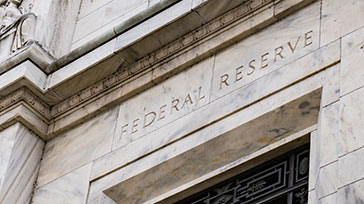Key Points
- S&P hits new high as US stocks march forward amid rotational plays
- Investor confidence boosted by news of bipartisan US infrastructure deal
- Spike in annual inflation brushed off as consumer confidence stay flat
Major US indices headed higher for the week (21-25 June) in yet another week of reversal in performances from the prior week.
The S&P 500 rallied by 2.7% to another record for its biggest weekly gain since early February. The Dow gained 3.4% for its best week since mid-March while the tech-heavy Nasdaq Composite advanced 2.4% after briefing nudging new highs in intraday trading over the week.
The boost in momentum on Friday after the market rose on three of the previous four sessions came after the Biden Administration announced a bipartisan $1 trillion infrastructure package. The multiplier effect from the deal could lift US annual GDP by roughly 1% over the next decade – news of which fanned the tailwinds for industrial, energy and financial stocks.
The deal had overshadowed the release of the core personal consumption expenditure (PCE) – the US Fed’s preferred measure of price rises – which rose to 3.4% in May, its biggest year-on year uptick since 1992.
That figure was however seen as being distorted by the base effect of a year ago during the midst of the pandemic lockdowns at a time when the US economy looks poised to reap benefits from a reopening economy with the negative effects from the virus fading further into the background.
Investors were also soothed by the fact that the month-on-month rise in inflation at 0.5% came in below expectations, which takes the pressure off the Fed’s need to reel back its ultra-loose monetary policy.
It also bolstered the US central bank’s view that inflation is transitory and not running away as feared. That appeared to be reflected in US bond yields which did not react strongly on the latest inflation data with the 10-year yield ending the week at 1.52%.
The latest US consumer confidence came in flat at 0.4% for May while jobless claims climbed to 411,000 (above economists’ estimates of 380,000) for the week ended June 19 which pointed to continued labour market bumps despite a strong economic recovery.
A better gauge of annual inflation would probably be from June data onwards when the base effects from the pandemic-induced downturn a year ago are less pronounced, and supply chain bottlenecks such as port congestions and mismatch of containers worldwide are gradually iron out.
Expectations that companies will report strong second-quarter earnings from the economy’s reopening were another factor for the market’s upbeat mood after Friday’s biggest gainer, Nike, reported a 114% jump in US sales with stronger forward guidance for its global operations.
Looking ahead, the US indices will likely march forward gradually than sprint ahead and not always in lockstep as investors continue to sort out the impact of inflationary pressures (short and longer term) on different sectors such as those which are likely to face wage pressures in industrials and retail or acute supply issues in materials.
The tussle between value, cyclicals and tech (both cyclical and secular techs) will continue to pan out as evident by the week’s rotational plays which saw a daily musical chair for leadership – techs leading on three days before being overtaken by energy, materials, industrials or financials.
US banks are meanwhile looking forward to resuming shares buyback after the Fed loosened restrictions imposed during the Covid-19 downturn, while tech investors, for now, seems to be shrugging off headwinds from actions by US regulators.
Meanwhile there could be further volatility ahead due to the rebalancing of the Russell indices which includes some of the retail-driven meme favourites such as GameStop and theatre operator AMC. It is estimated that more than $170 billion of shares will change hands from the 625 changes to the indices that include the Russell 1000 and Russell 2000.
While the more than $2 trillion in cumulative stimulus bodes well for corporate profits, Wall Street will also be looking closely in the weeks ahead at how the US Congress plans to pay for the infrastructure package. For now at least, it does not appear to include any tax hikes that will affect businesses profits, as will be the case if inflation pressures take hold instead of being transitory.
With June winding to a close and markets shifting into the second half of the year, the monthly jobs or payrolls report will be the highlight this week as a gauge of how the US economy is replacing the jobs losses from the pandemic and if rising wages have affected recruitment as well as make goods and services dearer for consumers.
Economists expect a figure of about 700,000 jobs to rise. While better than the 559,000 in May, it will be below the optimistic forecasts earlier in the year at 1 million or more. Besides the jobs data, there will also be the release of US manufacturing output data. Likewise, markets will be looking at manufacturing PMIs data from China for any signs of a slower pace in economic recovery. Meanwhile, OPEC meets on July 1 to decide if the major producers will raise their oil output.
This publication shall not be copied or disseminated, or relied upon by any person for whatever purpose. The information herein is given on a general basis without obligation and is strictly for information only. This publication is not an offer, solicitation, recommendation or advice to buy or sell any investment product, including any collective investment schemes or shares of companies mentioned within. Although every reasonable care has been taken to ensure the accuracy and objectivity of the information contained in this publication, UOB Asset Management Ltd ("UOBAM") and its employees shall not be held liable for any error, inaccuracy and/or omission, howsoever caused, or for any decision or action taken based on views expressed or information in this publication. The information contained in this publication, including any data, projections and underlying assumptions are based upon certain assumptions, management forecasts and analysis of information available and reflects prevailing conditions and our views as of the date of this publication, all of which are subject to change at any time without notice. Please note that the graphs, charts, formulae or other devices set out or referred to in this document cannot, in and of itself, be used to determine and will not assist any person in deciding which investment product to buy or sell, or when to buy or sell an investment product. UOBAM does not warrant the accuracy, adequacy, timeliness or completeness of the information herein for any particular purpose, and expressly disclaims liability for any error, inaccuracy or omission. Any opinion, projection and other forward-looking statement regarding future events or performance of, including but not limited to, countries, markets or companies is not necessarily indicative of, and may differ from actual events or results. Nothing in this publication constitutes accounting, legal, regulatory, tax or other advice. The information herein has no regard to the specific objectives, financial situation and particular needs of any specific person. You may wish to seek advice from a professional or an independent financial adviser about the issues discussed herein or before investing in any investment or insurance product. Should you choose not to seek such advice, you should consider carefully whether the investment or insurance product in question is suitable for you.





